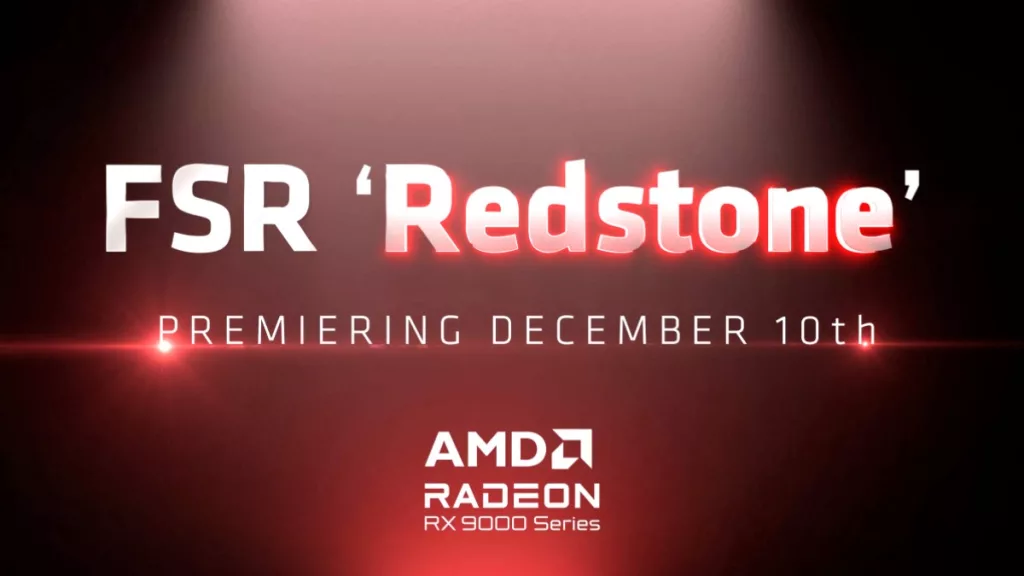
It’s official now that AMD FSR Redstone will arrive for Radeon RX 9000 GPUs on December 10, following its debut in Call of Duty: Black Ops 7. It’s a strange world when a game featuring new technology from a GPU manufacturer launches before said manufacturer provides its own official reveal, but that is the case for AMD’s new denoiser tech. Multiple media websites have already begun testing FSR Redstone in the latest Call of Duty game, just as AMD’s Jack Hyunh released a teaser video confirming its upcoming launch.
In essence, AMD’s FSR RedStone works much like NVIDIA’s Ray Reconstruction in that both use AI to improve image quality when using ray tracing. Early testing (1, 2) for RedStone has shown promising but inconsistent results in CoD. While there’ve been overall improvements, there are also instances of image abnormalities, but these are also seen regardless of which option is used, and are said to still be better than the native in-game option. While there are a number of rumors that allude to AMD FSR Redstone being able to run on older GPUs, it will only be officially supported on the newer Radeon RX 9000 series, which features dedicated hardware, much like NVIDIA’s RTX series GPUs, to compute the data for Redstone.
FSR 4 makes its way to Proton
FSR 4 is another technology that AMD has officially stated to only be supported on the Radeon RX 9000 series, but folks in the community have been hard at work in bringing it to RDNA 2 / 3 GPUs with mixed results. The latest effort comes via Linux developer Hans-Kristian Arntzen, who has released VKD3D-Proton 3.0 to bring FSR 4 to other Radeon GPUs. The developer, who has previous experience working with Valve, has said this latest update to VKD3d-Proton provides a “hacky emulation path” for older GPUs to use FSR4. More information and a download link can be found on GitHub. However, similar to attempts from others in the community, the developer notes there can be significant performance costs, but this is at least a step in the right direction to bring the feature over.
“We added support for AGS WMMA intrinsics through
– Hans-Kristian Arntzen, via GitHubVK_KHR_cooperative_matrixandVK_KHR_shader_float8, which is enough to support FSR4.”
